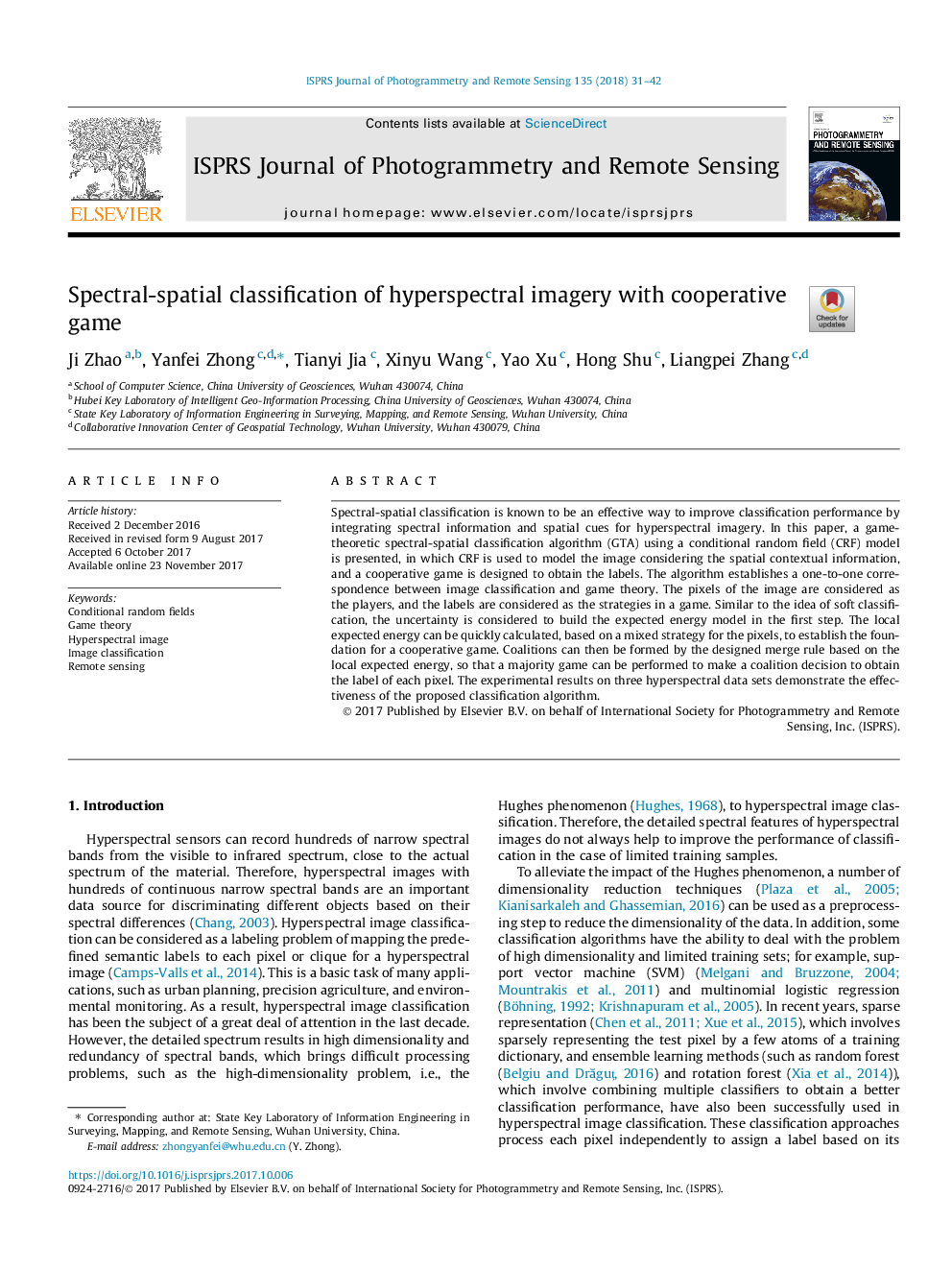| Article ID | Journal | Published Year | Pages | File Type |
|---|---|---|---|---|
| 6949248 | ISPRS Journal of Photogrammetry and Remote Sensing | 2018 | 12 Pages |
Abstract
Spectral-spatial classification is known to be an effective way to improve classification performance by integrating spectral information and spatial cues for hyperspectral imagery. In this paper, a game-theoretic spectral-spatial classification algorithm (GTA) using a conditional random field (CRF) model is presented, in which CRF is used to model the image considering the spatial contextual information, and a cooperative game is designed to obtain the labels. The algorithm establishes a one-to-one correspondence between image classification and game theory. The pixels of the image are considered as the players, and the labels are considered as the strategies in a game. Similar to the idea of soft classification, the uncertainty is considered to build the expected energy model in the first step. The local expected energy can be quickly calculated, based on a mixed strategy for the pixels, to establish the foundation for a cooperative game. Coalitions can then be formed by the designed merge rule based on the local expected energy, so that a majority game can be performed to make a coalition decision to obtain the label of each pixel. The experimental results on three hyperspectral data sets demonstrate the effectiveness of the proposed classification algorithm.
Related Topics
Physical Sciences and Engineering
Computer Science
Information Systems
Authors
Ji Zhao, Yanfei Zhong, Tianyi Jia, Xinyu Wang, Yao Xu, Hong Shu, Liangpei Zhang,
